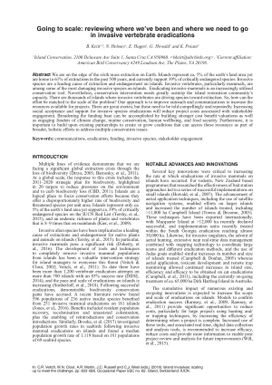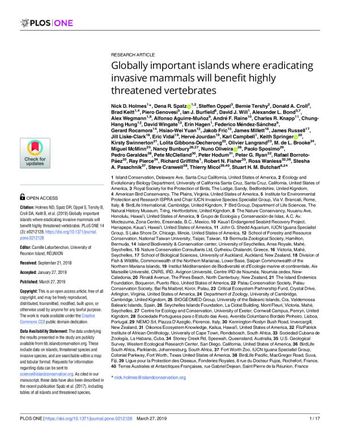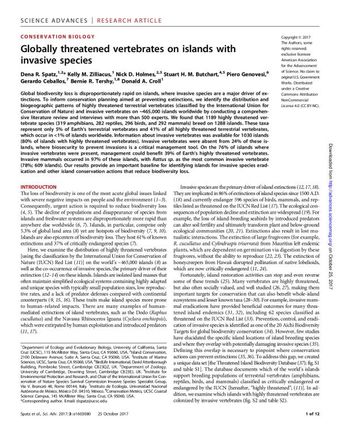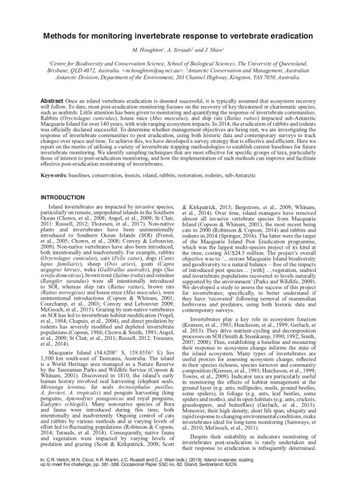Going to scale: reviewing where weve been and where we need to go in invasive vertebrate eradications
- Description:
- We are on the edge of the sixth mass extinction on Earth. Islands represent ca. 5% of the earths land area yet are home to 61% of extinctions in the past 500 years, and currently support 39% of critically endangered species. Invasive species are a leading cause of extinction and endangerment on islands. Invasive vertebrates, particularly mammals, are among some of the most damaging invasive species on islands. Eradicating invasive mammals is an increasingly utilised conservation tool. Nevertheless, conservation intervention needs greatly outstrip the island restoration communitys capacity. There are thousands of islands where invasive vertebrates are driving species toward extinction. So, how can the effort be matched to the scale of the problem? One approach is to improve outreach and communications to increase the resources available for projects. There are great stories; but these need to be told compellingly and repeatedly. Increasing social acceptance and support for invasive species eradications will reduce project costs associated with stakeholder engagement. Broadening the funding base can be accomplished by building stronger cost benefit valuations as well as engaging funders of climate change, marine conservation, human wellbeing, and food security. Furthermore, it is important to build upon existing partnerships to create or grow coalitions that can access these resources as part of broader, holistic efforts to address multiple conservation issues.
- Display date:
- 2019
- Collections:
- Secretariat of the Pacific Regional Environment Programme (SPREP)
- Publisher:
- International Union for Nature Conservation (IUCN)
- Content partner:
- Secretariat of the Pacific Regional Environment Programme (SPREP)
- Availability:
- Not specified
-
Copyright status: All rights reservedFind out more about what you are able to do with this itemThis item is all rights reserved, with means you'll have to get permission from Secretariat of the Pacific Regional Environment Programme (SPREP) before using it. For more information, please see our use and reuse page.What can I do with this item?Non-infringing useNZ copyright law does not prevent every use of a copyright work, and this item may be hosted by an international institute or organisation. You should consider what you can and cannot do with a copyright work.No sharingYou may not copy and/or share this item with others without further permission. This includes posting it on your blog, using it in a presentation, or any other public use.No modifyingYou are not allowed to adapt or remix this item into any other works.No commercial useYou may not use this item commercially.
Related items
Welcome and warm Pasifik greetings
The information on this site has been gathered from our content partners.
The names, terms, and labels that we present on the site may contain images or voices of deceased persons and may also reflect the bias, norms, and perspective of the period of time in which they were created. We accept that these may not be appropriate today.
If you have any concerns or questions about an item, please contact us.



